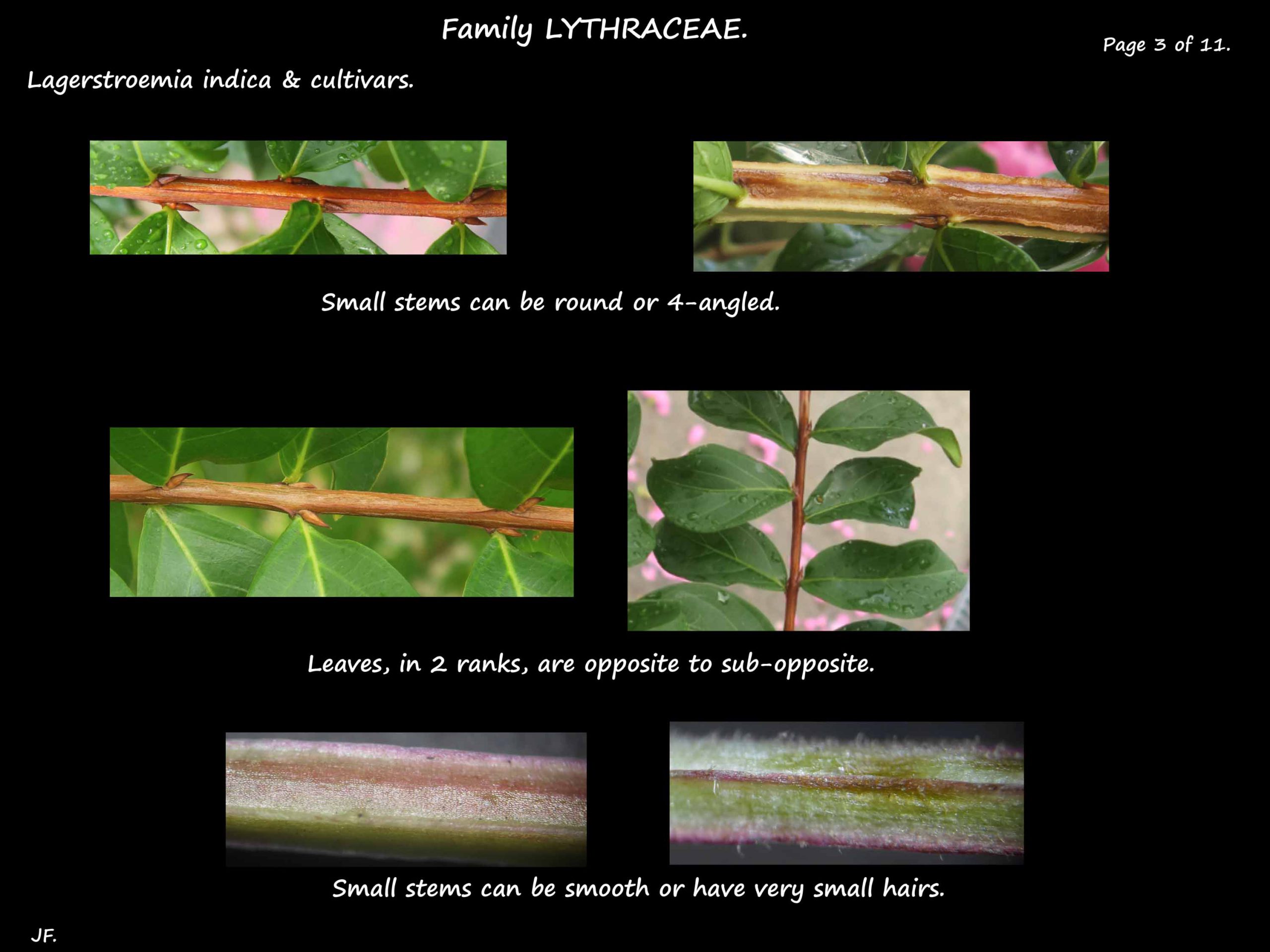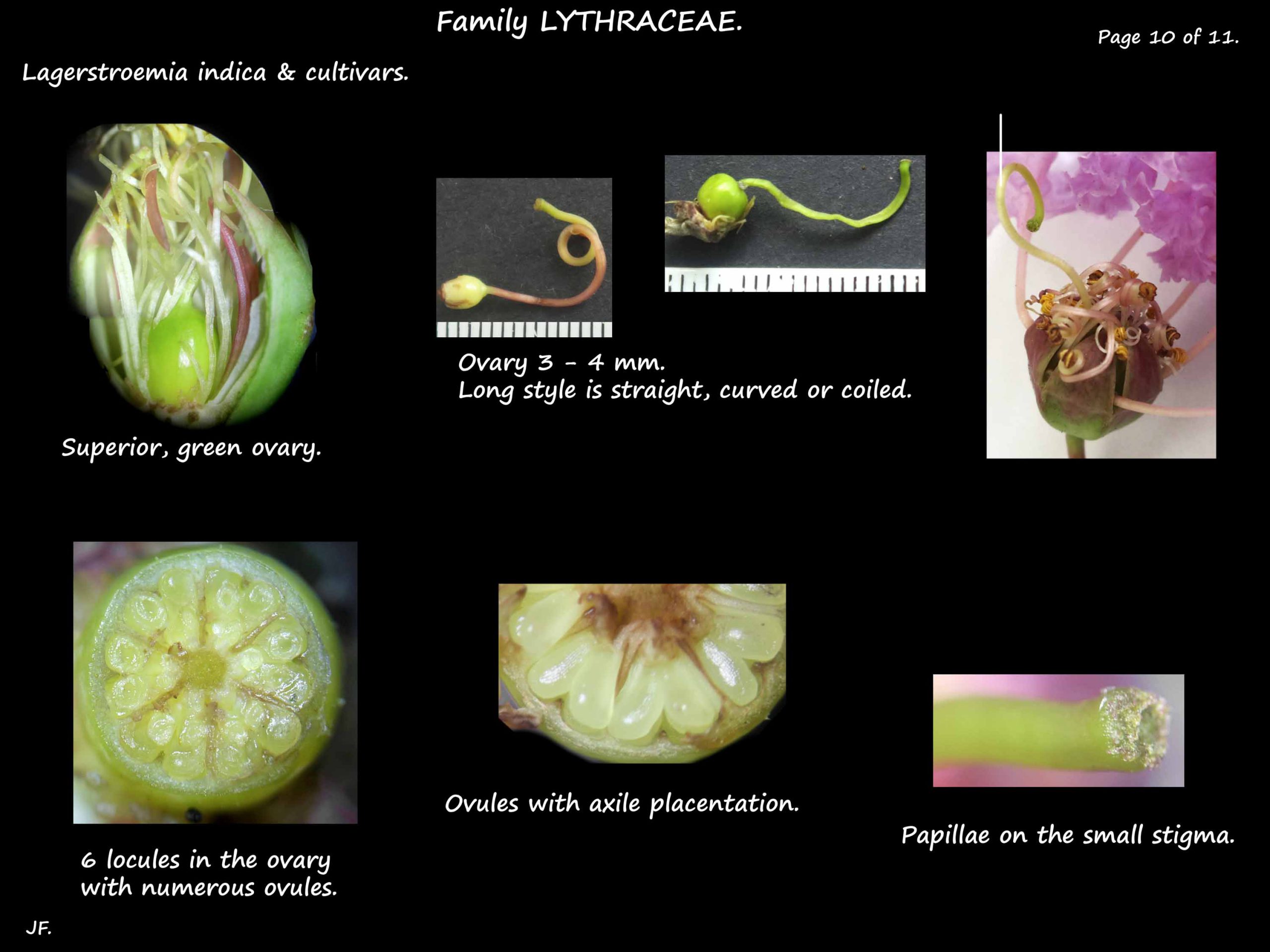Lagerstroemia indica.
In Family Lythraceae the Crepe myrtle is native to India and Asia.
They are common in Brisbane gardens, parks and streets.
They are deciduous shrubs or small trees up to 7 m tall.
They are often multi-stemed with long erect or drooping branches.
The smooth, thin bark on the trunk and large branches peels off each year.
This leaves mottled areas in greys, grey-green, browns and purplish or pinkish-brown.
Small twigs are 4 angled and may be smooth of have small, fine hairs.
The leaves vary from opposite to sub-opposite.
The petiole is absent or up to 2 mm long.
Leaves are mostly around 3 to 7 cm long and 2 to 4 cm wide.
The blade can be obovate, ovate, elliptic or almost round.
The tip can be rounded with a small mucro, tapering or notched and the edge may be wavy.
There may be a few hairs on the veins on the both surfaces but mainly the lower.
Before they fall the dark green leaves change to red, yellow or orange.
The terminal inflorescences, up to 20 cm long, are branched clusters of flowers.
They are approximately pyramidal with a wide base and tapering tip.
The densely packed flowers can weigh the branch ends down.
Inflorescences may have some tiny, fine hairs.
There are bracts and the individual flower stalks or pedicels have very small bracteoles.
There is a hypanthium with 6 triangular sepal lobes that curve inwards then flare out as the flower ages.
The tube is up to around 1 cm long and may have no, to obvious, ribs.
There is an annulus (ridge) on the inner base of the lobes.
There are no appendages (sometimes called an epicalyx) between the sepal lobes.
There are no hairs or some minute, fine ones.
There are typically 6 petals attached to the top of the hypanthium between the sepal lobes.
Petals have a narrow, clawed base up to 1 cm long.
The round, wrinkled blade is 1 to 2 cm across.
Trees can have flowers in white or shades of red, pink, mauve or purple.
There are numerous (36 to 42) stamens inserted near the base of the hypanthium.
The outer whorl have longer, thicker filaments and larger anthers.
The inner whorl have shorter, fine filaments and smaller anthers.
The filaments are tangled together.
The superior green ovary has no hairs.
There is a single style that can be straight, bent or twisted.
There is a small, capitate stigma.
The fruit are brown, ellipsoidal capsules up to around 1 cm long.
Each has 6 (4) chambers with small, 8 mm seeds with an apical wing.
Hybrids and cultivars.
There are many, many hybrids and cultivars of L. indica but these days most are from crossing
L. idica with L. fauriei which has white flowers and is more mildew resistent.
There are dwarf plants, shrubs and trees with rough or smooth, colourful bark.
Leaves may be tinged with bronze or turn yellow, red, purplish-red or orange before falling.
One series of cultivars have dark burgendy leaves that are almost black.
Flower colours include white and white with prominent gold anthers.
Reds are described as light, deep, brilliant, cherry, crimson or watermelon.
One cultivar has a mix of red and white flowers.
Pink flowers can be coral, hot or hot-musk pink and pink with reddish or white edges.
There are light or dark lavender flowers, shades of purple and some described as blue.
Some cultivars have up to 100 stamens with bright yellow anthers.
J.F.












